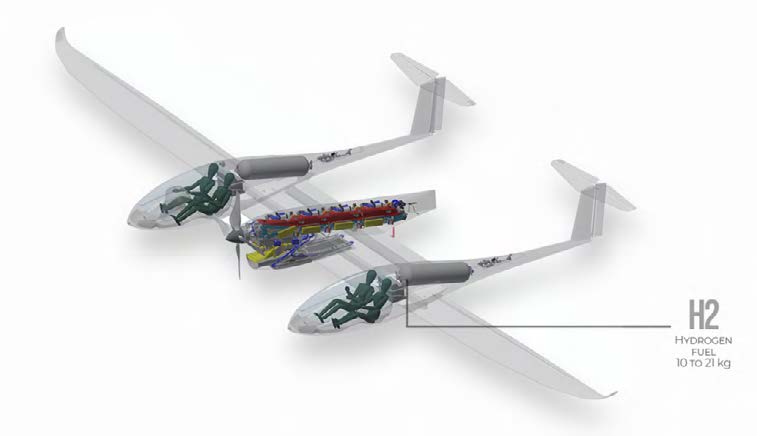The use of hydrogen as an aircraft fuel or energy source has previously been shown to be technically feasible, with one engine on a Tupolev Tu-155 modified to run on hydrogen in the 1980s. The price and availability of hydrogen within the aviation system, as well as the complexity of on-board storage have until recently made this architecture unattractive when compared to use of kerosene-based fuels. The increased focus on CO2 emissions, coupled with the greater availability of renewable energy sources that permit the production of “green hydrogen” have rekindled interest in this potential alternative. The Airbus ZEROe initiative is aiming to develop a zero CO2 emission commercial aircraft that will enter into service by 2035.
Hydrogen can be used in conjunction with fuel cells to produce electricity to power electric motors, or through combustion in a gas turbine engine, similar to kerosene, to provide mechanical energy. When used within fuel cells the only emission is water, whereas hydrogen powered gas turbines generate combusted emissions, including water and NOX. In both cases the water vapour emissions are markedly higher than those from kerosene. However, particulate matter emissions are considered to be zero, and hence the formation of persistent contrail-induced cirrus is likely to be less pronounced. The latest estimates suggest that hydrogen used in conjunction with fuel cells could reduce the climate impact in flight by 75 to 90 percent, and when used for combustion the reduction could be 50 to 75 percent
[20]
[21]
. However, further research is needed in this area to fully understand the emissions reduction that could be achieved and the associated impacts.
Some early hydrogen powered prototypes are being developed, such as APUS i-2, H2FLY’s HY4 and ZeroAvia’s retrofitted Piper M-class. However, technical challenges remain. While the higher energy density of hydrogen would allow for a significant reduction in required fuel mass, the volume of hydrogen would need to be four times more compared to kerosene for the same amount of energy, even when stored in liquid form at -253⁰C.
In order to address these challenges, one of the three pillars within the Clean Aviation research initiative is hydrogen and is focused on developing the associated technology and regulatory requirements.
